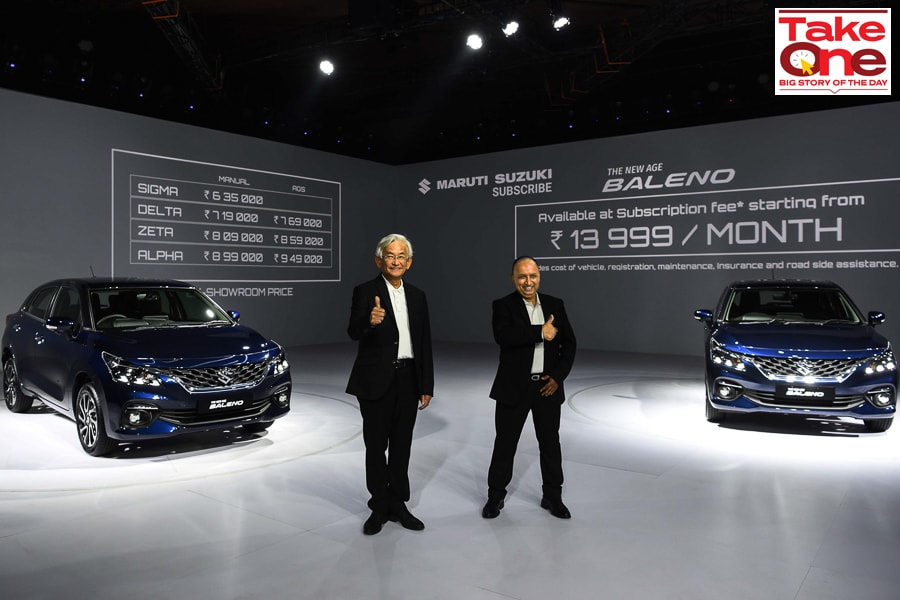
After years of staying away, Maruti Suzuki is now desperate for electric mobility play
India's largest carmaker has recently announced a staggering spend of Rs10,000 crore toward its electric car strategy, with plans to launch electric vehicles in three years, all of which implies an inevitable shake-up in the country's EV ecosystem
 Kenichi Ayukawa, Managing Director & CEO and Shashank Srivastava, Sr Executive Director Marketing and Sales, Maruti Suzuki at the launch of New Age Baleno at Aero City, New Delhi on February 23, 2022.
Photo by Vipin Kumar/Hindustan Times via Getty Images
Kenichi Ayukawa, Managing Director & CEO and Shashank Srivastava, Sr Executive Director Marketing and Sales, Maruti Suzuki at the launch of New Age Baleno at Aero City, New Delhi on February 23, 2022.
Photo by Vipin Kumar/Hindustan Times via Getty Images
For a very long time, Maruti Suzuki had been cautious about its electric vehicle plans.
Even as rivals such as Tata Motors and Mahindra announced their intention to focus on electric vehicles, and made significant foray into the segment, India’s largest carmaker had maintained a stoic silence over its electric vehicle play. That is perhaps why, rival Tata Motors today control about 75 percent of India’s electric car market, even as Maruti Suzuki remains India’s largest carmaker.
All that could possibly change soon. On March 19, the Gurugram-headquartered carmaker finally announced that it will spend a staggering Rs10,000 crore toward its electric car play, with plans to launch its electric vehicles in three years.








